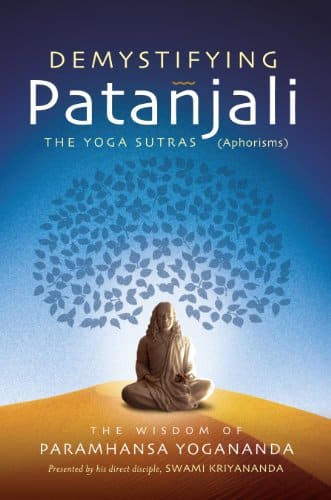(This article is about the eight-limbed yoga path, not the hatha yoga style called ashtanga vinyasa yoga.)
What Is the Definition of Ashtanga Yoga?
Ashtanga Yoga, which literally means “eight-limbed yoga” (1)), is a system outlined in the yoga sutras attributed to the ancient sage Patanjali.
 The yoga sutras are general guidelines for spiritual growth through right living, and are universal. They are not beliefs, but methods that can be tested by each practitioner to see for himself or herself if they actually have the benefits that they claim. (2)
The yoga sutras are general guidelines for spiritual growth through right living, and are universal. They are not beliefs, but methods that can be tested by each practitioner to see for himself or herself if they actually have the benefits that they claim. (2)
The sutras consist of eight limbs or requirements to achieve full Self-realization. They are not practiced in order, but are all developed together as one progresses on the spiritual path (3) Meditation is one such technique that helps a spiritual practitioner to develop in these areas (4)
The limbs are:
1. Yama
2. Niyama
3. Asana
Asana is the third limb on of the path that Patanjali defined. It does not mean Hatha Yoga postures, but the ability to sit unmoving with a straight spine for long periods of time. (Hatha Yoga postures can help one to do this, if one is physically able to practice them.)
4. Pranayama
Pranayama means control over energy in the body. If one can control one’s energy, then one can withdraw it from the outer senses and up the spine, thereby raising one’s consciousness. Traditionally pranayama is used to mean control over the breath, but it is actually controlling the energy in the body via control of the breath.
5. Pratyahara
Pratyahara is the interiorization of one’s attention and thoughts.
6. Dharana
Dharana is concentration; one-pointed focus.
7. Dhyana
Dhyana means steadfast meditation on God or the Higher Self.
8. Samadhi
Samadhi is complete absorption in the Infinite — literally “oneness.”
There are two stages of samadhi: sabikalpa and nirbikalpa. Sabikalpa samadhi is conditional and temporary; the ego is still there subconsciously and can come back after the meditation is over. Nirbikalpa samadhi is unconditional and permanent; one cannot fall after obtaining nirbikalpa samadhi; the ego is gone for good. (5)
Further Reading
- Demystifying Patanjali by Swami Kriyananda
- The Art and Science of Raja Yoga by Swami Kriyananda
- ↩ Ashtanga Yoga: Practice, Theory, and Philosophy, Jana A. Czipin. Chapter 1, “The Evolution of Yoga and Ashtanga’s Place.”
- ↩ Demystifying Patanjali, Swami Kriyananda. Preface.
- ↩ How to Meditate, Jyotish Novak. Chapter 13, “Patanjali’s Eightfold Path.”
- ↩ Glory of Spiritual India, Hari Datt Sharma. Chapter 4, “Yoga.”
- ↩ Paramhansa Yogananda: A Biography, Swami Kriyananda. Chapter 25, “The Eightfold Path of Patanjali.”
